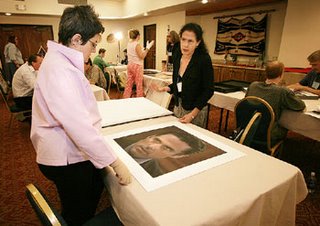Forbes Weighs In: Twelve Undervalued Photographers
Forbes contributor Missy Sullivan has written an article on collecting and the fine art photography market, Twelve Undervalued Photographers. The article has advice for those jumping into collecting for the first time, and those who are still considering it. Ten examples of photographers are given, accompanied with the key information that is resommended in the article.
"The problem with photography, joked Eastman House curator Alison Nordström, is that there’s so damn much of it. But the fun is in the finding. Don’t assume that all these auction records will price you out of the game. Sure, as vintage material becomes more scarce, values will rise. It’s in the intersection between photography and contemporary art--especially in the secondary market--where you need to be most cautious. That’s where the winds of fashion and hype can blow prices sky-high. But it’s also one of the many areas of opportunity. One highly respected photography collector, John Bennette, has amassed a visionary collection of postwar and contemporary material without ever spending more than $2,000 per print."
To read an excerpt from the Forbes Collector's newsletter and suscribe, click here. You can also view a gallery of the ten photographers.

















